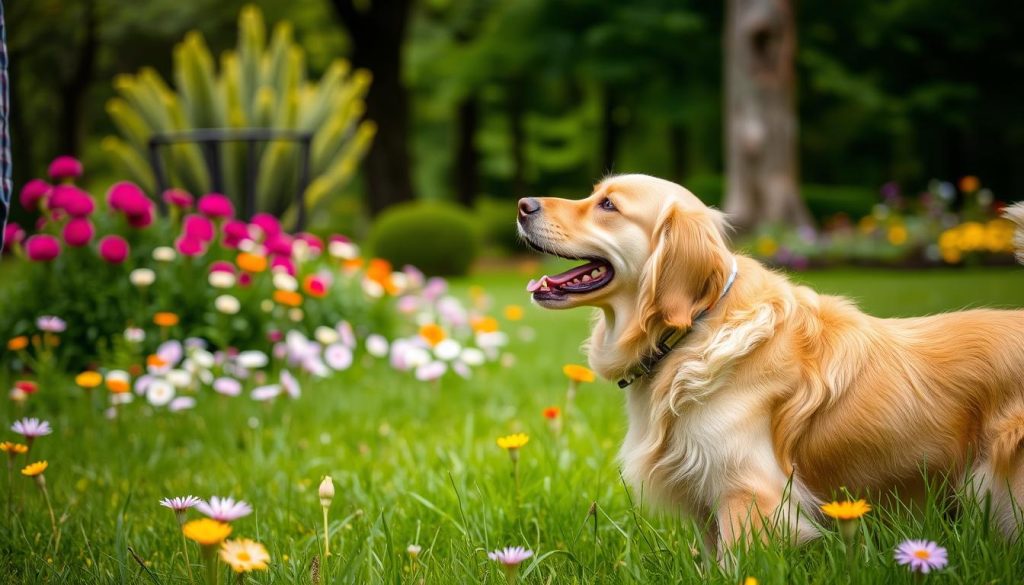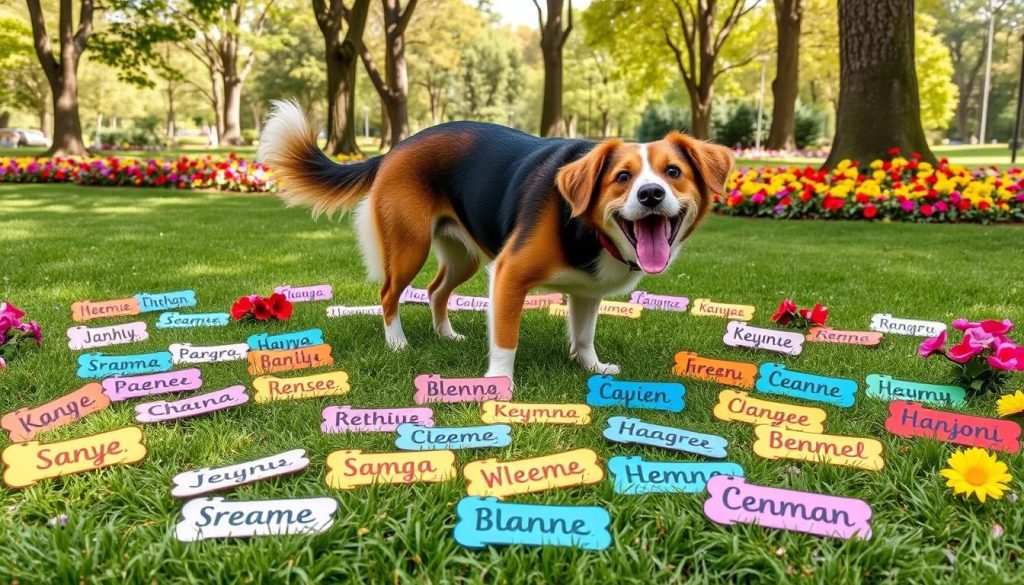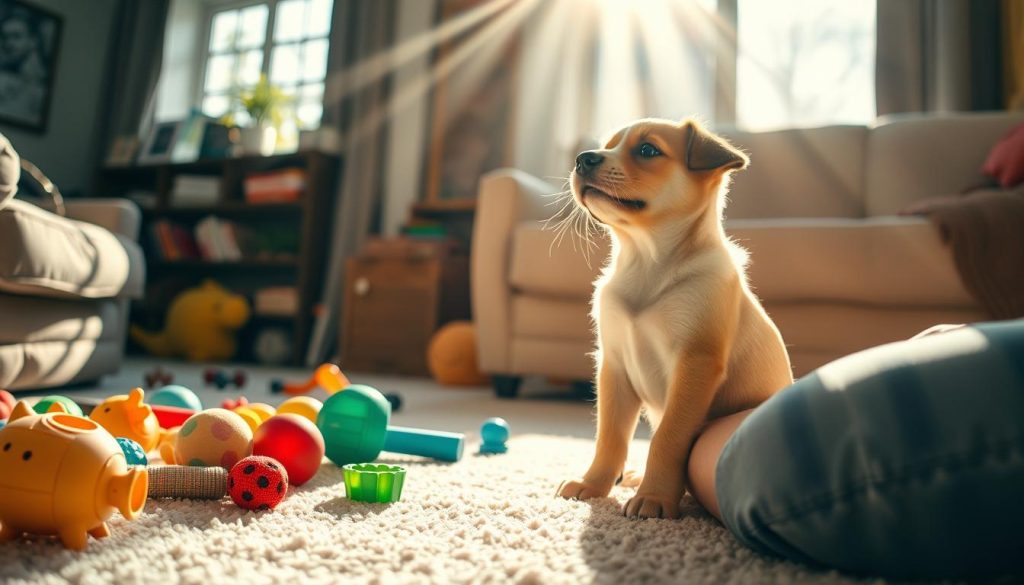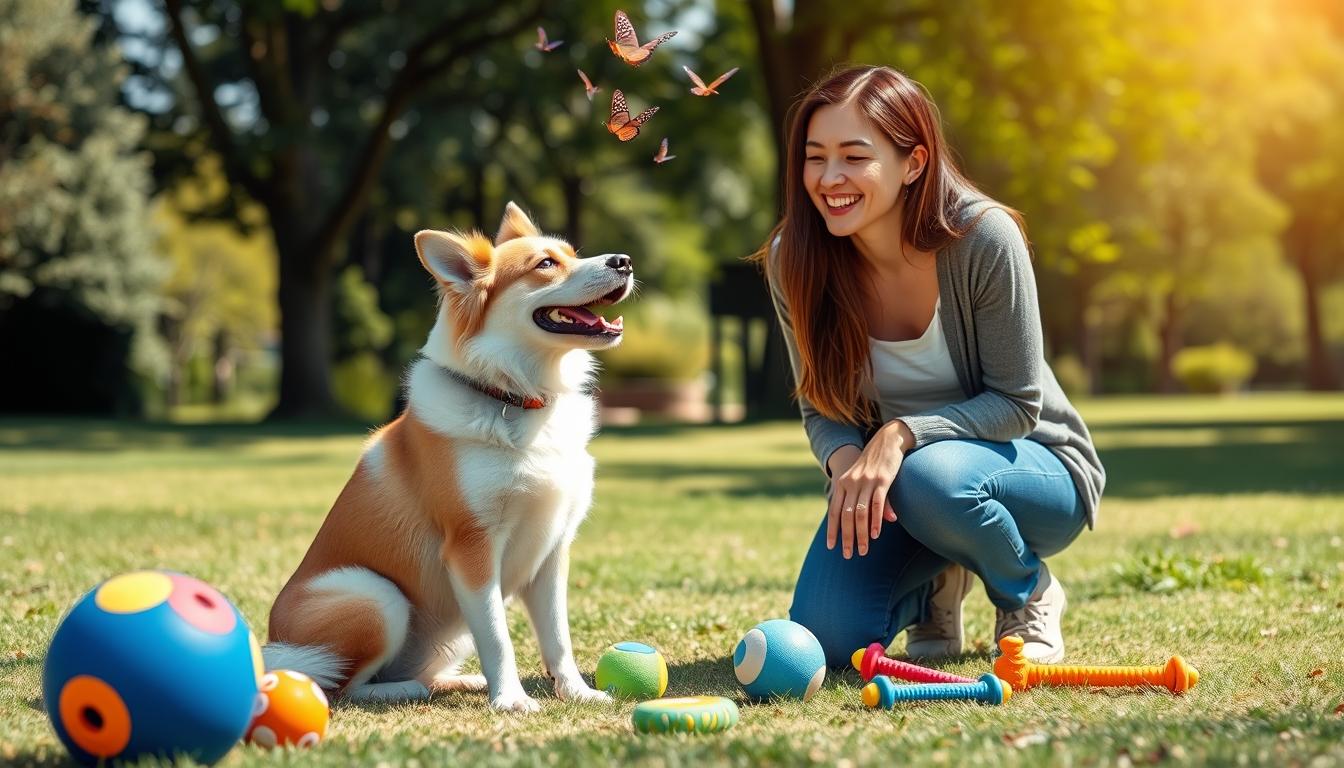Ever wondered why some dogs quickly respond to their names, while others ignore it? Teaching dogs their names is key to basic commands. It boosts responsiveness, safety, and strengthens your bond with them.
Getting your dog to recognize their name is more than a fun challenge—it’s crucial. Imagine calling your dog and knowing they’ll always come. This skill leads to better training and a happier life together.
Ready to teach your dog their name and see the benefits? Keep reading to learn how to make this skill a big part of your dog’s life.
Understanding the Importance of Naming Your Dog
Choosing a name for your new dog is more than just fun. It’s crucial for your dog’s identity and how you communicate with it.

Quick Recommendation : Our blog is filled with tips , tricks, and methods for training your dog. If you would like to attend a Free Dog Training Workshop, we recommend the K9 Training Institute.
A dog’s name is its main identity. It helps create a strong bond between the dog and its owner. Names are key for training and teaching good behavior. Dogs see their names as a sign to listen, making commands work better.
From a psychological view, dogs understand their names very well. They link names to good things and familiar voices. This is why a dog’s name is so important for its happiness and feeling at home.
Throughout history, names for pets have held deep meaning. Different cultures have given names that reflect their beliefs and feelings. This shows how important a dog’s name is to its identity.
Selecting the Perfect Name for Your Dog
Choosing a name for your dog is both fun and challenging. Look for names that are easy to say. Names like “Max” or “Bella” are great because they’re short and simple. They make it easy to call your dog in different places.

Quick Recommendation : Our blog is filled with tips , tricks, and methods for training your dog. If you would like to attend a Free Dog Training Workshop, we recommend the K9 Training Institute.
It’s also important to pick a name that stands out. A unique name helps your dog know when you’re calling it. Try to avoid names that sound like common commands like “sit” or “stay.”
Think about your dog’s breed, personality, and looks when choosing a name. For example, a big dog like a Great Dane might be named “Zeus.” A small, lively dog like a Beagle could be called “Lucky.”
Popular trends and cultural references can also help. Names from movies, TV shows, and books are often great choices. Consider names like “Rocky” from the movies or “Milo” from “The Mask.”
Remember, your dog’s name can shape its behavior. A positive and warm name can make your dog friendly and approachable. Take your time to find the perfect name. It will make a big difference in your dog’s life.
When to Start Teaching Your Dog Its Name
Starting to teach your puppy its name is a key part of their training. The best time is usually between 8 to 12 weeks old. At this age, puppies are very curious and can focus well, making them ready to learn.

Quick Recommendation : Our blog is filled with tips , tricks, and methods for training your dog. If you would like to attend a Free Dog Training Workshop, we recommend the K9 Training Institute.
Teaching them early is very helpful. Puppies soak up information fast and love to please. Use their name often during play, training, and when you talk to them. This helps them learn and respond to their name.
Starting early sets a strong base for more training. Keep lessons short and fun to match their attention span. This makes training a positive experience for both you and your puppy.
Setting Up the Right Environment
Creating the right environment is key for your dog’s learning. A quiet space helps them focus better. Look for a quiet spot in your home, like a secluded room or a calm backyard.
Consistency is crucial for good training. Always train in the same spot. This helps your dog learn faster and better.
Keep training sessions short and regular. This keeps your dog’s attention and makes training more effective.
If you live in a busy area, set rules for family members. This ensures everyone respects your training space. This way, your dog can learn peacefully.
Basic Techniques for Name Recognition
Teaching your dog to respond to its name is key in basic dog training. Start by getting your dog’s attention with verbal cues and body language. Say your dog’s name clearly and happily while looking at it. If it looks back, give it a treat and praise it.
Being consistent is vital in dog training. Always use the same tone and words for your dog’s name. You can also use hand signals to help your dog understand better. For example, hold a treat and call your dog’s name, then bring your hand to your face.
Keep training sessions short and fun. Long sessions can confuse and upset your dog. Instead, have many short sessions each day. Following these steps will help your dog learn its name well, leading to better communication and a stronger bond.
Using Positive Reinforcement
Teaching your dog to recognize its name is easier with positive reinforcement training. Use treats, praise, and play as dog training rewards to encourage your pup. Make sure to reward them right away and often. This way, your dog will learn to associate its name with good things.
Timing is everything in positive reinforcement training. Give a reward as soon as your dog looks at you after hearing its name. This helps them connect their name with the reward. Adding play and affection to the rewards makes learning fun for your dog.
How often you practice is also important. Regular sessions with rewards help reinforce good behavior. Try different reinforcement techniques to keep your dog interested and motivated. Use everything from tasty treats to praise to keep them engaged.
Common Mistakes to Avoid
Training your dog can be tricky. One big mistake is using different names or tones. This can confuse your dog. Use one name and a consistent tone to avoid problems.
Being too impatient is another mistake. Teaching your dog to recognize its name takes time. Don’t rush it. Give your dog the time it needs to learn.
Being inconsistent with training times is also a problem. Regular sessions help your dog learn better. Make sure you stick to a schedule every day.
Using harsh methods is a big mistake. It can hurt your dog’s confidence and slow down training. Instead, use positive reinforcement to encourage good behavior.
Avoid these mistakes and you’ll have a successful training experience. This will help you and your dog have a better relationship.
Advanced Training Tips
Improving your dog’s response requires advanced training. Start by practicing their name recognition in various places. This could be at the dog park or a quiet beach. Your dog should always answer their name, no matter where you are.
Make training more challenging by increasing the difficulty level. Begin in your home, then move to the backyard. Finally, try training in busier places. This helps your dog learn to recall their name in different environments.
Distance and how long you’re apart also matter. Start by standing close to your dog. Then, slowly move further away. This teaches your dog to recognize their name even when you’re far apart.
Adding distractions to training sessions also helps. Begin with simple distractions like toys or treats. Then, introduce more complex ones, like other dogs or strangers. Each distraction helps your dog focus better and learn to respond to their name in any situation.
Remember to be patient and consistent. Advanced dog training takes time. But with effort, your dog will learn to recognize their name and handle tough situations.
Progress Tracking and Milestones
It’s key to track your dog’s name recognition to see if training is working well. Keeping a log or checklist is a great way to do this. It helps you see daily improvements and what needs work.
Watch how fast your dog responds to its name in different places and situations. By tracking this, you’ll spot what your dog does well and what they struggle with.
Important milestones include when your dog answers right away, even when distracted, and follows commands after hearing their name. Look for consistent responses in different places. This shows the training is sticking.
As you keep track, you’ll know when to make changes in training. Checking your log often helps you improve your dog’s name recognition skills.
Dealing with Training Challenges
Many dog owners face training challenges. Every dog learns at its own pace. Some breeds or dogs may be harder to train. It’s important to be patient and consistent.
One big challenge is dealing with distractions. Train your dog in a quiet place first. Then, add distractions slowly. Keep repeating commands and rewarding your dog to keep their focus.
If your dog doesn’t respond to usual training, try something different. Some dogs like treats, toys, or praise. Find what motivates your dog and use it to encourage good behavior.
Dealing with training challenges takes time and effort. Stay patient and adjust your training as needed. Celebrate small wins. With persistence, you’ll see your dog’s training improve.
Teaching Your Dog to Recognize Its Name
Teaching your dog to recognize its name is key for good communication and safety. Start in a quiet place to avoid distractions and keep your dog’s attention on you. Say the name with a happy, upbeat tone and reward with treats or hugs. Being consistent is vital in teaching your dog its name.
Repeating the name often is important. Even after your dog learns its name, keep practicing. Use the name during daily activities like playtime or meals. This helps your dog remember its name better. Keep the practice sessions short and fun to keep your dog interested.
Regularly refreshing your dog’s name training helps prevent forgetting. Use the name in different activities and always give rewards when they respond. Stay patient and encouraging to support your dog’s learning journey.
Encouraging Family Participation
Getting the whole family involved in *family dog training* can really help your dog learn its name. When everyone helps out, it makes training more consistent and effective.
Assigning roles to each family member is a smart move. For instance, one person can use positive reinforcement. Another can keep an eye on how well your dog is doing. This way, your dog gets the same message from everyone.
It’s also important to have family meetings to talk about training progress. This keeps everyone on the same page. It helps your dog learn better because commands and methods are consistent.
Being patient and working together is key. When you do, *family dog training* becomes a great way to bond with your pet. It makes everyone closer.
Conclusion
Teaching your dog to recognize its name is key to training. It’s the first step for all other commands. By picking the right name and setting up a good environment, you’re ready to start.
Use positive methods and avoid common mistakes for a smooth training. Being consistent and patient is crucial. Celebrate every small win along the way.
Getting your family involved can make training better. Make learning fun for everyone. Remember, staying positive and persistent will help you succeed. Good luck on this journey with your dog!
Quick Recommendation : Our blog is filled with tips , tricks, and methods for training your dog. If you would like to attend a Free Dog Training Workshop, we recommend the K9 Training Institute.

